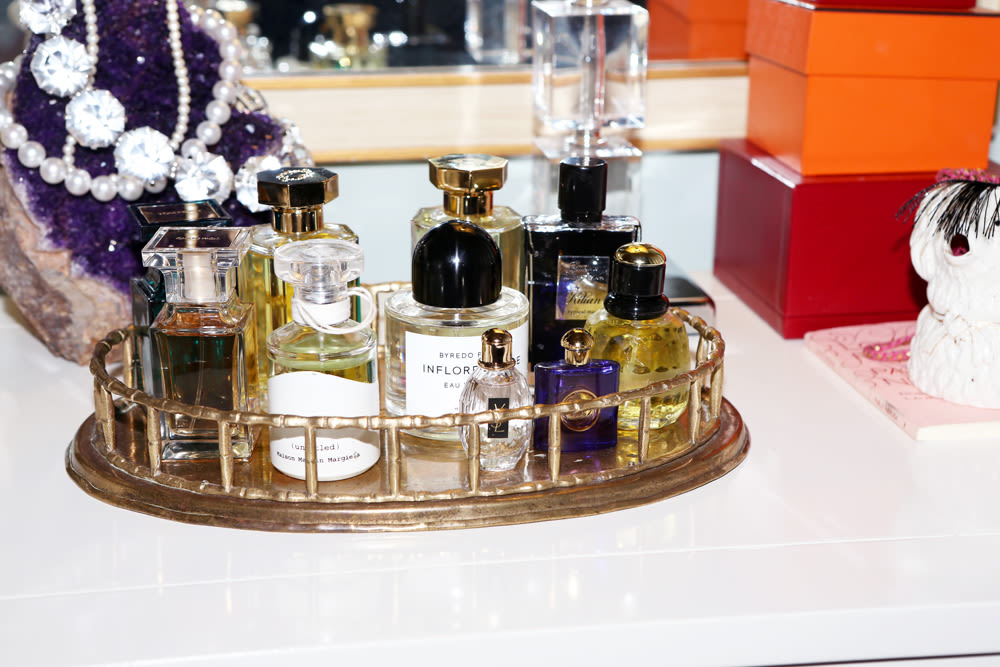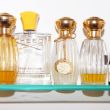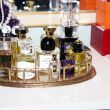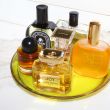During our freshman year of high school, my best friend and I skipped class to meet Whitney Port at Bloomingdale’s. The former Teen Vogue intern was scheduled to make an appearance at the Clinique counter to promote the bestselling Happy fragrance and sign autographs. The brand had dubbed her a “Happy Ambassador' for the occasion, which is a title I would very much like to hold one day when I grow up.
At the time, I was 15 years old and was certain no one would ever capture the condition of my existence quite as Natasha Bedingfield had in “Unwritten.” It seemed appropriate that Port and I should smell the same—we already shared a theme song and a vested interest in the fate of Lauren Conrad.
When it was my turn to approach her, she and I snapped a grainy picture for posterity, which was printed out and affixed to the 3.4-ounce bottle I had just purchased.
According to Clinque.com, Happy combines a “hint of citrus.” a “wealth of flowers.” and “a mix of emotions.” But each time I applied it over the next 10 months, I could detect only the polish and glamour and symmetrical features of the girl who had moved me to buy it.
It’s a pattern that probably reveals more about me than I care to admit: First, I get a whiff of a woman I admire. Then, I purchase her perfume. It happened again about six months into my tenure with Happy, when I hosted a family friend in town from Geneva for a few weeks. Patricia was brilliant and elegant and never ever checked her luggage on airplanes. She spoke five languages and once mentioned the Grand Duke of Luxembourg in casual conversation. “What a darling.”) Even now, she remains the most intoxicating person I have ever met. That January, she walked into our apartment wearing Guerlain Herba Fresca, and I spritzed the same fragrance on my pressure points every morning for the next three years.
Next came an inherited bottle of Chanel Mademoiselle from my grandmother and a brief stint with Bulgari Omnia Indian Garnet, which I picked up after noticing it on a very cool upperclassman.
When I started college, I was already in a serious affair with Dior Diorella—a scent my mother had worn for decades. I had hoped Sicilian lemon and honeysuckle would overpower the smoke, sweat, and spilled beer of my first semester. (They did not.) But I carried on with it anyway. It is still the most familiar scent I know. Like home and a hug—bottled. Given such considerable charms, I was not actively looking for something new when a friend and I stopped into Diptyque on Madison Avenue late last year.
'Smell this.” she instructed, holding up a vial of amber liquid. “It reminds me of you somehow.” she pronounced.
I inhaled the scent stamped L’Ombre dans l’Eau—all black currant, roses, and singed leaves in some combination that I had never before encountered—and I knew right then I had to have it.
I am sure many women spritz on the same fragrance before running out the door. That doesn’t bother me—I have never wanted my perfume to belong only to me. Perfumes are personalities. We fall for them the way we fall in love. And like cute boys and the extraordinary women on whom I’ve always modeled myself, they pique our interest. We may barely know ourselves without them. Sometimes when we encounter them on someone else, they seem unrecognizable.
Still, I keep all of the empty, strange bottles. Lined up on my dresser, they trace the evolution of the kind of woman I thought I wanted to be: spontaneous, blonder, cooler, sexier, more intelligent, more like my mother, and then someone entirely different—newer and braver and more fearsome.
Most of all, they remind me how far I have come since that one time I really wanted to smell like grapefruits, Hawaiian wedding flowers, and an MTV starlet.
—Mattie Kahn






